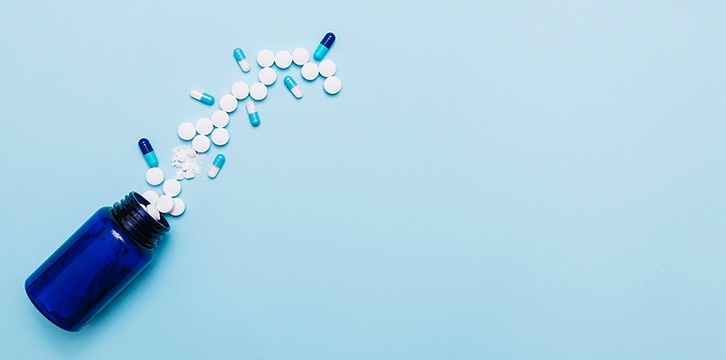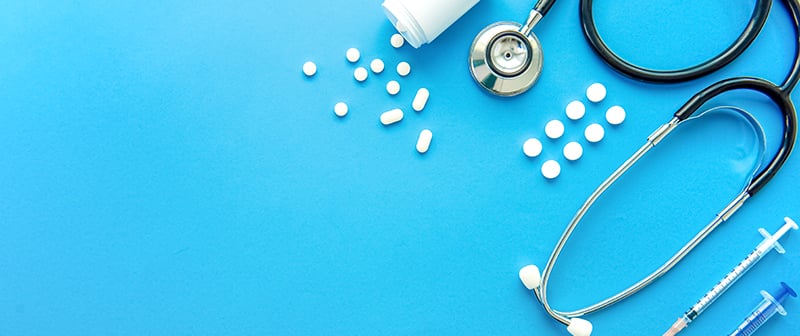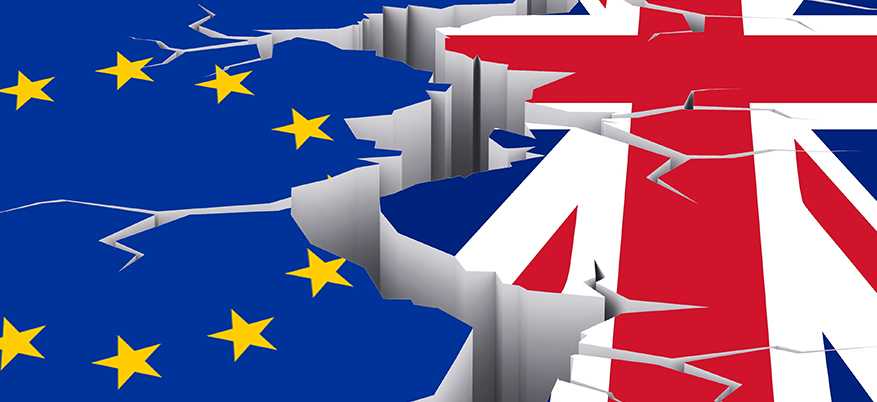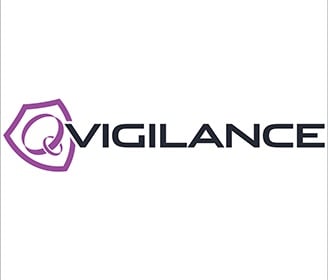The UK government has released draft legislation amending the regulation of authorised Medicinal Products, Medical Devices and Clinical Trials, to be implemented in the event that the UK leaves the European Union (EU) without a deal and transitional arrangement. The QVigilance team has reviewed this draft legislation, and provides below a summary of some of the key safety and regulatory impacts for this three topics:
Table of Content:- UK Draft Legislation for the Regulation of Authorised Medical Products
- UK Draft Legislation for the Regulation of Regulation of Clinical Trials
- UK Draft Legislation for the Regulation of Medical Devices
UK Draft Legislation for the Regulation of Authorised Medicinal Products

QPPV requirements
- Requirement for a qualified person for pharmacovigilance resident and operating in the UK
- This includes a temporary exemption for a transitional period of 21 months following ‘exit day’ of the UK, under the circumstances that where on the day before exit day, the EU QPPV resides and operates from another EEA member state.
Collection and reporting of Adverse Drug Reactions (ADRs)
- Marketing Authorisation Holder (MAH) to report all UK and foreign serious suspected ADRs to the licensing authority (i.e. MHRA) within 15 days
- MAH to report all UK non-serious suspected ADRs to the licensing authority (i.e. MHRA) within 90 days
- MAH to report all suspected ADRs from the literature regardless of whether these are identified by the EMA’s Medical Literature Monitoring (MLM) service
- MHRA to report all suspected ADRs occurring in the UK to the World Health Organisation (WHO) database
Note, it is not explicitly outlined in the draft legislation the mechanism or format by which MAHs shall report suspected ADRs to the MHRA
Periodic safety update report (PSUR)
PSUR reporting direct to the licensing authority (i.e. MHRA) reintroduced – i.e where previously harmonised single assessment to the EMA was required. The legislation also requires the MHRA to publish a list of reference dates, submission dates and frequency for UK licensed products with the same active substance or combination of active substances.
Other Important Amendments
The draft contingency legislation also includes substantial changes to the handling of safety concerns and urgent actions and how MAHs and the MHRA will cooperate directly in such matters.
Scope for the MHRA to reintroduce its black triangle “▼” scheme for additional monitoring of certain products which was superseded by the EMA’s additional monitoring black triangle scheme back in 2012.
Additionally, there is provision for the MHRA to introduce a national medicines web-portal for maintaining product information, which (we speculate) could be something akin to the EMAs article 57a database.
Pharmacovigilance System – further provisions for pharmacovigilance
Under a new schedule (12A) to Regulation 205A, which provides “further provision as to the performance of pharmacovigilance activities”, there is the requirement to have in place one or more PSMFs by the MAH covering all the products licensed by the MAH. The format appears to mirror that of the EEA PSMF as specified under the EMA’s Guideline on |Good Pharmacovigilance Practices (GVP) Module II: Pharmacovigilance System Master File.
Regarding the location of this PSMF, the draft legislation states that the PSMF must be located in, or accessible electronically from, the United Kingdom and permanently accessible to the UK QPPV. This implies a PSMF fulfilling EU requirements and located in the EEA may be acceptable so long as it is electronically accessible from the UK; is at the permanent disposal of the UK QPPV; and covers the products licensed in the UK, but this may need further clarification from the MHRA. However, it is important to note that a change in QPPV details or PSMF location would now require a minor (Type IA) variation to the UK Marketing Authorisation (MA).
This new schedule also includes requirements for the MAHs and the MHRA for quality systems and performance monitoring, collection and reporting of suspected adverse reactions, risk management plans (RMPs), PSURs and Post-Authorisation Safety Studies (PASS) with board alignment to relevant modules in the EU’s GVP.
UK Draft Legislation for the Regulation of Clinical Trials

The UK’s current regulatory framework for clinical trials as per 'The Medicines for Human Use (Clinical Trials) Regulations (2004)' would remain in force after a no-deal exit of the UK from the EU. The new EU Clinical Trials Regulation (CTR) 536/2014 will not come into force. Hence, it will not be incorporated into UK law on exit day.
Notification of Suspected Unexpected Serious Adverse Reactions (SUSAR)
- The sponsor’s responsibility of reporting Suspected Unexpected Serious Adverse Reactions (SUSARs) arising in the UK to the competent authorities of other EEA member states has been removed from the regulation.
- The sponsor’s obligations to report UK SUSARs to the competent authorities of other EEA member states , by entering the report or information in the European database established in accordance with Article 11 of the Directive [i.e. EudraVigilance Clinical Trials Modules (EVCTM)] has been removed from the regulation .
- If a clinical trial is conducted in a third country in addition to the UK, the sponsor shall ensure that all SUSARs occurring at that site are reported as soon as possible to the licensing authority. Pre-existing requirements for SUSAR reporting stand, i.e. for fatal or life-threatening SUSARs, these should be reported within 7 days or in any other case, within 15 days beginning with the day after the sponsor is first aware of the reaction.
Annual List of Suspected Serious Adverse Reactions and Safety Report
The DSUR reporting year and definition of the data lock point anniversary for investigational medicinal products (IMPs) has been amended such that this is now the development international birth date (DIBD) rather than being based on the first clinical trial authorisation for that IMP in any EEA member state.
Functions in Relation to Good Clinical Practice (GCP)
The draft legislation lays down provision for future regulatory updates that may include:
- Amendment to the conditions and principles of GCP to take into account technical and scientific advances;
- Amendment to the documentation requirements for the trial master file (TMF).
The draft legislation further lays down provision for the licensing authority (i.e. MHRA) to publish guidance on:
- the application, format and documentation to be submitted to an ethics committee opinion, focusing mainly on the information given to study participants, and on the appropriate measures for the protection of their personal data;
- the format and contents of a request for authorisation of a clinical trial, as well as the supporting documentation, on the quality and manufacture of the investigational medicinal product, any toxicological and pharmacological tests, the protocol and clinical information on the investigational medicinal product including the investigator’s brochure.
Transitional provisions relating to EU exit
For a period of two years following ‘exit day’, the sponsor of a clinical trial, or their legal representative may continue to be located in an EEA member state. This implies that after this transitional period, the sponsor, or a legal representative of the sponsor must then be based in the UK in order to conduct clinical trials in the UK. It is not clear in the legislation how this would impact on-going clinical trials interestingly. There are also transitional status quo arrangements in place for the import of IMP and marketed products used in UK clinical trials from EEA states.
UK Draft Legislation for the Regulation of Medical Devices

The draft ‘contingency’ legislation will include the amends for 'The Medical Devices Regulations 2002' (“the 2002 Regulations”). This draft guidance, subject to Parliamentary approval, is designed to come in to force following the UK’s exit from the EU should the UK, leave without a negotiated deal and transitionary period, a so-called ‘no-deal BREXIT’.
These Regulations ‘the Medical Devices (Amendment etc. (EU Exit) Regulations 2019’ would come into force on exit day under a no-deal situation, with the exception of certain requirements that will come into force after a given transitional period, including, but not limited to:
- Requirement for a Responsible Person (person responsible for placing a medical device on the UK market) to be established/resident in the UK. This will come into force 4 months after exit day
- Provision of a UK Unique Device Identifier (UDI) labelling system and database for UK devices. Adherence to this system by UK device manufacturers will come into force on 26 May 2020 or 26 May 2022 depending on the category/type of device.
As an overview of this contingency legislation document, the 2019 Medical Devices (Amendment etc.) (EU Exit) Regulations is divided into four “parts”, as follows:
- PART 1 amends the existing 2002 Regulations which were devised to implement the three EU Medical Device Directives:
- Active Implantable Medical Device Directive (AIMD) 90/385/EEC;
- Medical Devices Directive (MMD) 93/42/EEC, and;
- In Vitro Diagnostics Directive (IVDD) 98/79/EC.
- PART 2 and PART 3 incorporate the provisions outlined in the two new EU Regulations: EU 2017/745 ‘Medical Devices Regulation (MDR)’ and EU 2017/746 ‘In Vitro Diagnostics Regulation (IVDR), which have replaced the three former EU Directives (see below for further details).
- PART 4 contains new “schedules” to the 2002 Regulations, in accordance with those outlined in the two MDR and IVDR. There are 27 schedules in total which provide detailed guidance.
It should be noted that devices intended to administer medicinal products are governed by the Human Medicines Regulations 2012 (also amended as draft Regulations 2019).
In PARTS 2 and 3 of the regulations, there are two new key requirements for UK medical devices and in vitro diagnostic devices, as follows:
New provision for a UK-based Unique Device Identifier (UDI) system and database for UK devices
The requirement for a UK Unique Device Identifier (UDI) system and database appears to be aligned with the general principles and requirements for an EEA-wide UDI system as laid out in Regulation (EU) 2017/745.
New provision for a UK Responsible Person
UK Responsible Person – Key Responsibilities in relation to safety of the device:
- The UK Responsible Person is appointed by the manufacturer of a device manufactured outside of the UK and acts on their behalf to ensure that the manufacturer is meeting the obligations outlined in the Regulations. They are reportable to the Secretary of State in the UK.
- They must ensure that the manufacturer is immediately informed of any complaints/reports of suspected incidents related to the device that they are responsible for. The source of these reports can be from health care professionals, patients or users of devices.
- They cooperate directly with the Secretary of State to implement and oversee any Corrective and Preventative Actions (CAPAs) taken to eliminate or mitigate risks, including known and potential and newly identified risks.
PART 2 – New Part VIII of the Medical Devices Regulation
Key points covering vigilance aspects of medical devices (including active implantable medical devices) for human use:
SCOPE:
- Part 2 (Part VIII) covers the legislative requirements for Medical Devices Regulation (revoking Regulation (EU) 2017/745). It outlines the key obligations for manufacturers of medical devices (including active implantable medical devices) for human use.
- In scope for Part VIII are medical devices for human use including accessories to the device and clinical investigations of devices including accessories.
- Out of scope for Part VIII are in vitro medical devices, medicinal products and Advanced Therapy Medicinal Products (ATMPs) as defined in the Human Medicines Regulation (2012).
POST-MARKETING SURVEILLANCE:
- The manufacturer of the device must ensure that there is a post-market medical device surveillance system in place that is appropriate to the risk class and type of the device.
- This system should be an integral part of the manufacturer’s quality management system (QMS) for the device.
- It must be suitably robust to ensure that the gathering, recording and analysing of data in relation to the quality, safety and performance of the device is sufficient to allow continual evaluation, throughout the life-cycle of the device, to demonstrate a favourable benefit-risk ratio.
- The post-market surveillance system must be based on the post-market plan outlined in Schedule 5 of the Regulation.
- A post-market surveillance report is required for manufacturers of Class I devices that summarises any post-market surveillance data.
- Trend reporting – the manufacturer must report statistically significant increases in the frequency and/or severity of non-serious and/or expected, clearly documented undesirable effects that could impact on the benefit-risk ratio of the device throughout the life-cycle of the device. This may include incidents that have led or potentially could lead to risks to patients, users and others that may outweigh the intended benefits of the device. These need not be reported as single case reports.
- Manufacturers must perform ongoing post market clinical follow up (PCMF), outlined in Schedule 14 of the Regulation, throughout the life-cycle of the device (when used for its intended purpose).
REPORTING OF SERIOUS INCIDENTS AND FIELD SAFETY CORRECTIVE ACTIONS:
- Manufacturers of devices on the market (with the exception of investigational devices) must report any cases of serious incidents (with the exception of clearly documented expected side-effects and effects subject to trend reporting):
- Any serious incident with an established or suspected causal relationship with the device within 15 days of awareness.
- Any event of death or unanticipated deterioration in a person’s state of health with an established or suspected causal relationship with the device within 10 days of awareness.
- Any serious public health threat not later than 2 days after the manufacturer becomes aware of the threat.
- It is expected that in the event of any missing relevant information, the manufacturer will follow up to obtain this and submit a follow up report.
- Similar serious incidents that have occurred with the same device or device type for which the root cause has been identified and/or previous field safety corrective action has been implemented are subject to periodic reporting and need not be reported as single case reports. If the incident is clearly documented and common it can be discussed in periodic reports.
- Manufacturers must also report any field safety corrective actions taken for marketed devices, including any undertaken by third countries where the device is marketed.
PERIODIC SAFETY UPDATE REPORTS (PSURS):
- Manufacturers of Class IIa, IIb and Class III devices are required to prepare a PSUR for each device or category/group of devices throughout the life-cycle of the device. This should summarise the following:
- Summary of the benefit-risk determination
- The main findings of PMCF
- Volume of sales, estimated patient population exposure and characteristics of that population and usage and frequency of the device
- Manufacturers of Class IIb and Class III devices must update the PSUR as required but at least annually
- Manufacturers of Class IIa devices must update the PSUR as required but at least every two years.
- For custom-made devices, the PSUR forms part of the technical documentation (outlined in Schedules 4 and 5).
- The PSUR should be made available to the Notified Body involved in the conformity assessment.
CLINICAL INVESTIGATIONS (outlined in Schedule 15):
- Clinical Investigations of medical devices must have Ethics approval and be conducted in accordance with Good Clinical Practice (GCP) requirements.
- A Clinical Investigation Plan (CIP) must include a description of the rationale, objectives, design, methodology, conduct, record-keeping and methods of analysis of the final data.
- If the sponsor of the clinical investigation is not established in the UK, they must ensure that there is a legal representative established in the UK.
REPORTING AND RECORDING OF AEs (occurring during a clinical investigation):
- The CIP must provide safety reporting processes for the collection of Adverse Events (AEs) and Serious Adverse Events (SAEs) and device deficiencies, including definitions and timelines for reporting.
- The Sponsor of the clinical investigation must have processes in place to ensure that any SAEs are reported by the investigator to the sponsor and that processes are in place to allow follow up of subjects enrolled in a clinical investigation.
- The investigator must report to the sponsor –
- Any AE identified in the CIP as being critical to the results of the clinical investigation
- All SAEs
- All device deficiencies that may have led to an SAE (if appropriate action of intervention had not been taken)
- Any “new findings in relation to” the above 3 points
- All SAEs with a suspected causal relationship with the device (or comparator) or investigation procedures, SAEs due to device deficiencies and new findings in relation to SAEs/device deficiencies are reportable (within 7 days if fatal or life-threatening and 15 days for all other seriousness criteria)
- The sponsor must submit a Clinical Investigation Report within 1 year of the end of the investigation.
PART 3 – New part IX of the Medical Devices Regulation
Key points covering vigilance aspects of in vitro medical devices (human use):
SCOPE:
- Part 3 (Part IX) covers the legislative requirements for Medical Devices Regulation (revoking Regulation (EU) 2017/746). It outlines the key obligations for manufacturers of in vitro medical devices for human use.
- In scope for Part IX are in vitro medical devices for human use including accessories to the device and clinical performance studies for in vitro medical devices.
POST MARKETING SURVEILLANCE:
- The manufacturer of the device must ensure that there is a post-market surveillance system in place that is appropriate to the risk class and type of the device.
- This system should be an integral part of the manufacturer’s quality management system (QMS) for the device.
- It must be suitably robust to ensure that the gathering, recording and analysing of data in relation to the quality, safety and performance of the device is sufficient to allow continual evaluation, throughout the life-cycle of the device, to demonstrate a favourable benefit-risk ratio.
- The post-market surveillance system must be based on the post-market plan outlined in Schedule 19 of the Regulation.
- A post-market surveillance report is required for manufacturers of Class A and B devices that summarises any post-market surveillance data.
- Trend reporting – the manufacturer must report statistically significant increases in the frequency and/or severity of non-serious and/or expected clearly documented undesirable effects that could impact on the benefit-risk ratio of the device throughout the life-cycle of the device. This may include incidents that have led or potentially could lead to risks to patients, users and others that may outweigh the intended benefits of the device. These need not be reported as single case reports.
- Manufacturers must perform ongoing post market performance follow up (PCPF), outlined in Schedule 27 of the Regulation, throughout the life-cycle of the device (when used for its intended purpose).
REPORTING OF SERIOUS INCIDENTS AND FIELD SAFETY CORRECTIVE ACTIONS:
- Manufacturers of devices on the market (with the exception of investigational devices) must report any cases of serious incidents (with the exception of clearly documented expected side-effects and effects subject to trend reporting):
- Any serious incident with an established or suspected causal relationship with the device within 15 days of awareness.
- Any event of death or unanticipated deterioration in a person’s state of health with an established or suspected causal relationship with the device within 10 days of awareness.
- Any serious public health threat not later than 2 days after the manufacturer becomes aware of the threat.
- It is expected that in the event of any missing relevant information, the manufacturer will follow up to obtain this and submit a follow up report.
- Similar serious incidents that have occurred with the same device or device type for which the root cause has been identified and/or previous field safety corrective action has been implemented are subject to periodic reporting and need not be reported as single case reports. If the incident is clearly documented and common it can be discussed in periodic reports.
- Manufacturers must also report any field safety corrective actions taken for marketed devices, including any undertaken by third countries where the device is marketed.
PERIODIC SAFETY UPDATE REPORTS:
- Manufacturers of Class C and D devices are required to prepare a PSUR for each device or category/group of devices throughout the life-cycle of the device. This should summarise the following:
- Summary of the benefit-risk determination
- The main findings of PMPF
- Volume of sales, estimated patient population exposure and characteristics of that population and usage and frequency of the device
- Manufacturers of Class C and D devices must update the PSUR at least annually
- Manufacturers of Class D devices must submit the PSUR to the notified body involved in the conformity assessment
- Manufacturers of Class C devices must make the PSUR available to the notified body involved in the conformity assessment upon request
CLINICAL PERFORMANCE STUDIES (outlined in Schedule 27 and 28):
- Clinical performance studies of medical devices must have Ethics approval and must meet the requirements outlined in Schedule 17, 27 and 28.
- They must be conducted in accordance with a clinical performance study plan (CPSP).
- If the sponsor of the clinical investigation is not established in the UK, they must ensure that there is a legal representative established in the UK.
REPORTING AND RECORDING OF AEs (occurring during clinical performance studies):
- The must provide safety reporting processes for the collection of Adverse Events (AEs) and Serious Adverse Events (SAEs) and device deficiencies, including definitions and timelines for reporting.
- The Sponsor of the clinical investigation must have processes in place to ensure that any SAEs are reported by the investigator to the sponsor and that processes are in place to allow follow up of subjects enrolled in a clinical investigation.
- The investigator must report to the sponsor –
- Any AE identified in the as being critical to the results of the clinical investigation
- All SAEs
- All device deficiencies that may have led to an SAE (if appropriate action of intervention had not been taken)
- Any “new findings in relation to” the above 3 points
- All SAEs with a suspected causal relationship with the device (or comparator) or investigation procedures, SAEs due to device deficiencies and new findings in relation to SAEs/device deficiencies are reportable (within 7 days if fatal or life-threatening and 15 days for all other seriousness criteria)
- The sponsor must submit a Performance Study Report within 1 year of the end of the investigation.
New PART 4 – additional schedules amending the 2002 regulations
In alignment with the EU 2017/745 ‘Medical Devices Regulation’ and EU 2017/746 ‘In Vitro Diagnostics Regulation’, the following schedules providing detailing requirements are incorporated:
SCHEDULE 2A - Modification of Annexes to Directives 90/385, 93/42, 98/79
Schedules 2A to 16 cover medical devices (including active implantable medical devices):
SCHEDULE 3 General safety and performance requirements for general medical devices
SCHEDULE 4 Technical Documentation
SCHEDULE 5 Technical documentation on post-market surveillance
SCHEDULE 6 Declaration of conformity
SCHEDULE 7 CE marking of conformity
SCHEDULE 8 UDI system Information to be submitted upon registration of devices
SCHEDULE 9 Classification rules
SCHEDULE 10 Conformity assessment based on quality management system
SCHEDULE 11 Conformity assessment based on type examination
SCHEDULE 12 Conformity assessment based on the product conformity verification
SCHEDULE 13 Procedure for custom-made devices
SCHEDULE 14 Clinical evaluation and post market clinical follow-up
SCHEDULE 15 Clinical investigations
SCHEDULE 16 List of groups of products without an intended medical purpose
Schedules 17 to 28 cover in vitro diagnostic medical devices:
SCHEDULE 17 General safety and performance requirements in vitro diagnostic medical devices
SCHEDULE 18 Technical documentation- in vitro diagnostic medical devices
SCHEDULE 19 Technical documentation on post-market surveillance for in vitro diagnostic medical devices
SCHEDULE 20 Declaration of conformity for in vitro diagnostic medical devices
SCHEDULE 21 CE marking of conformity
SCHEDULE 22 UDI Information to be submitted upon registration of in vitro diagnostic medical devices
SCHEDULE 23 Classification Rules for in vitro diagnostic medical devices
SCHEDULE 24 Conformity assessment based on quality management system
SCHEDULE 25 Conformity assessment based on the type-examination
SCHEDULE 26 Conformity assessment based on production quality assurance
SCHEDULE 27 Performance evaluation, performance studies and post-market performance follow-up
SCHEDULE 28 Interventional clinical performance studies and certain other performance studies
About QVigilance
QVigilance has a team of scientific and Pharmacovigilance consultants with broad experience in all areas of PV. As a result, we can provide guidance and support (including drafting and/or review) in the development/update of Standard Operating Procedures (SOPs)/working practices supporting Pharmacovigilance activities where these are undertaken within your organisation.
References
The Medical Devices (Amendment etc.) (EU exit) Regulations 2019 [draft contingency legislation]

